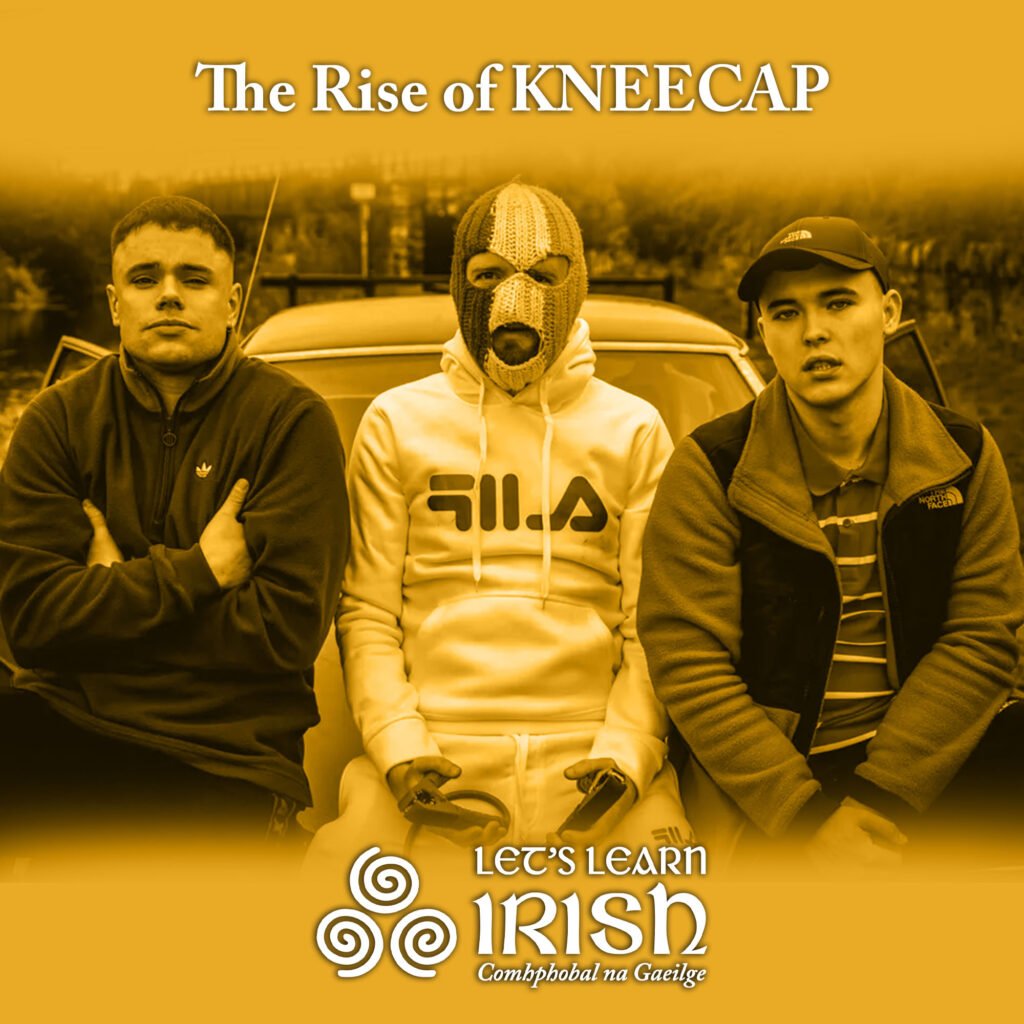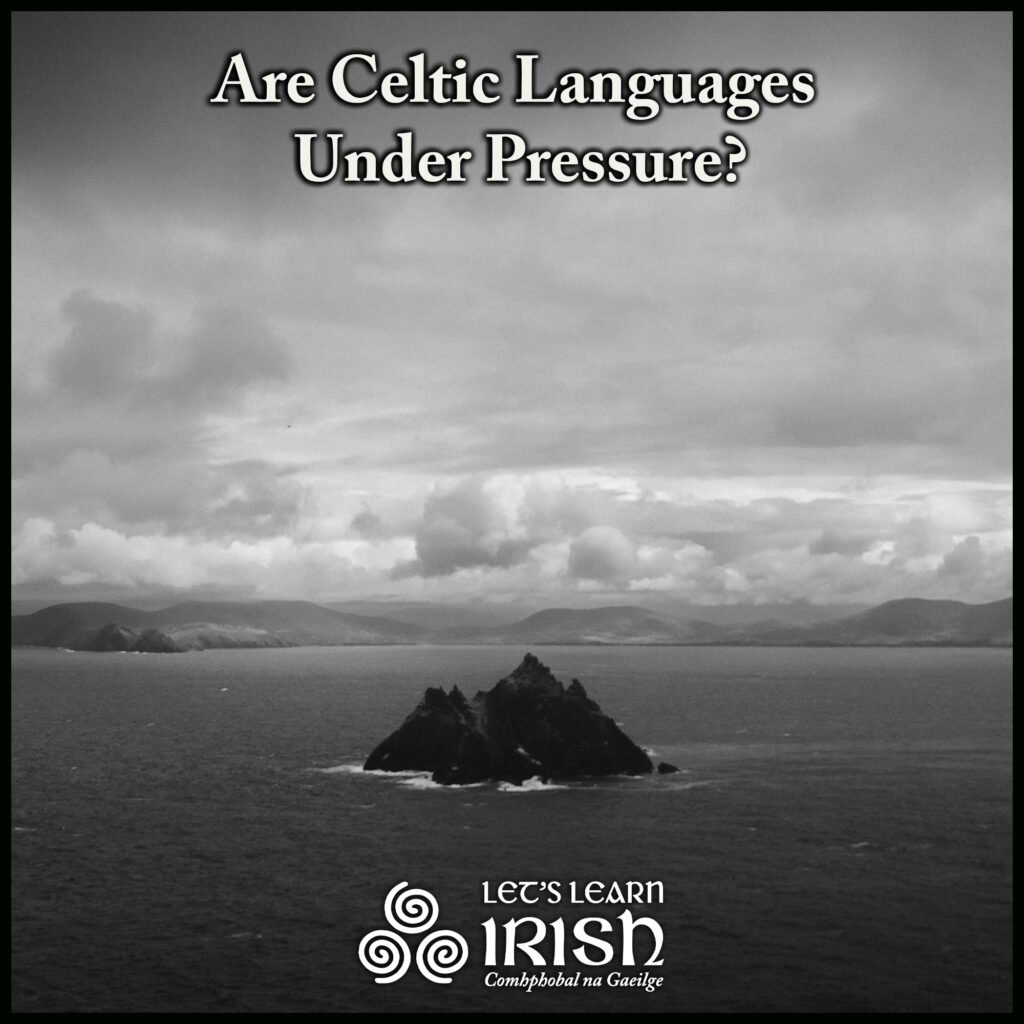Why I Learn Irish: Reclamation

Learning Irish is a significant part of connecting with my ancestry. What bits of language I’ve learned have transformed my sense of Irish culture, grounded me in my lineage, and deepened my understanding of the diaspora—especially how many Irish immigrants left ‘an Ghaeilge’ behind when we came to America, and what we lost when we forfeited our language.
I find myself romanticizing Irish—a dialect of coastal villages, stories by the turf fire, and placenames reflected on the mountainside. Much of the beauty of ‘an Ghaeilge’ comes from its roots as a language grounded in the land and a wealth of oral tradition. Sean-nós songs and seanfhocal proverbs reflect playful wit and profound sorrow, all the depths of humor and grief of the human experience.
But romanticization also locks languages in the past. Critics dismiss Irish and other minority and Indigenous languages as outdated relics on the verge of extinction, and therefore not worth learning.
Though rooted in ancestry, Irish is every bit a modern language full of slang and growth and crosscurrents, and well worth learning. The new Kneecap film shows the tensions and conflicts in our competing ideas about Irish, from the classroom to politics to underground hip hop. And language is kept alive through the messy act of using it, ‘mar is beatha an teanga í a labhairt’ (because speaking the language is what gives it life).
I believe we are living in the midst of a poignant moment for ‘an Ghaeilge’. Across the world, minority and Indigenous languages are undergoing a reawakening and revitalization. For Irish and many other languages, I see small but dedicated communities breathing fresh life into their ancestral dialects. In the long arc of language loss due to centuries of colonization, we are at a time of resurgence and blossoming creativity.

For the youth driving language revitalization, much of this blossoming is unfolding on social media. As part of the evolution of a living language, Irish has its own community-creating online spaces ‘as Gaeilge’. In the vein of sean-nós and oral tradition, modern Irish finds its poetic expression in meme culture, overlaid on .jpgs and mental snapshots of the post-modern digital world.
I find humor, horror, and hope in these memes. The continued use of Irish outside the nostalgic confines of rural Éire is a testament to the hard work that language keepers did to withstand the oppression of An Ghaeilge, especially with the continued fight for language rights in the six counties.
Similarly, Indigenous languages in North America have resisted erasure despite the best efforts of colonization. Residential boarding schools, the imposition of reservations and the prohibition of spiritual practices were all aimed at dispossessing native people of their land and language. Despite this, young Indigenous people continue to learn and revitalize their ancestral languages, breathing new life into them in traditional ceremonies and online platforms.
In a world that’s increasingly fast-paced and homogenized, where English is eclipsing hundreds of local dialects as the “practical” alternative or the key to modernity, reclaiming language is a powerful step to resist cultural erasure. Rooting into traditional knowledge and relationship with place by speaking our ancestral language gives deep perspective, ecological insight, and local resiliency. Machán Magan’s Thirty-Two Words for Field and Robin Wall Kimmerer’s Braiding Sweetgrass reveal the hidden worlds encoded in ‘an Ghaeilge’ and Potawatomi, and the relationships that we unlock when we reconnect with our native tongues. The spiritual healing and poignant beauty of re-inhabitating our forgotten languages is hard to express in words, especially here in English. But language activists are finding ways to do just that, in Chemakum, Gitsanimx̱, dxʷləšucid, Nłeʔkepmxcin, Chahta anumpa, Ilokano, and Irish, among countless others.

As much as there’s spiritual reclamation and ancestral knowledge to reawaken through native languages, there’s also the modern world to navigate. Blending the traditional and modern in meme culture shows just how resilient and creative Indigenous language activists are. Every time we create spaces to use our native words, we sow seeds for future generations to build worlds we can’t yet dream of. A simple meme, a bit of inspiration to keep up the good fight, and relatable humor about stumbling through basic conversations all contribute to the life of languages that were written off as useless.
Irish language learners have much to be proud of with our use of ‘an Ghaeilge’. And we have much to be inspired by, from native language keepers around the world stewarding languages that often have far fewer speakers and resources than Irish. Let’s celebrate our shared journey and give recognition to all the hard work being done by other nations to reawaken their own languages. Níl neart go cur le chéile (There’s no strength without unity.)
Bígí páirteach!
Join the online Irish community at LetsLearnIrish.com.
Follow on social media @LetsLearnIrish.





